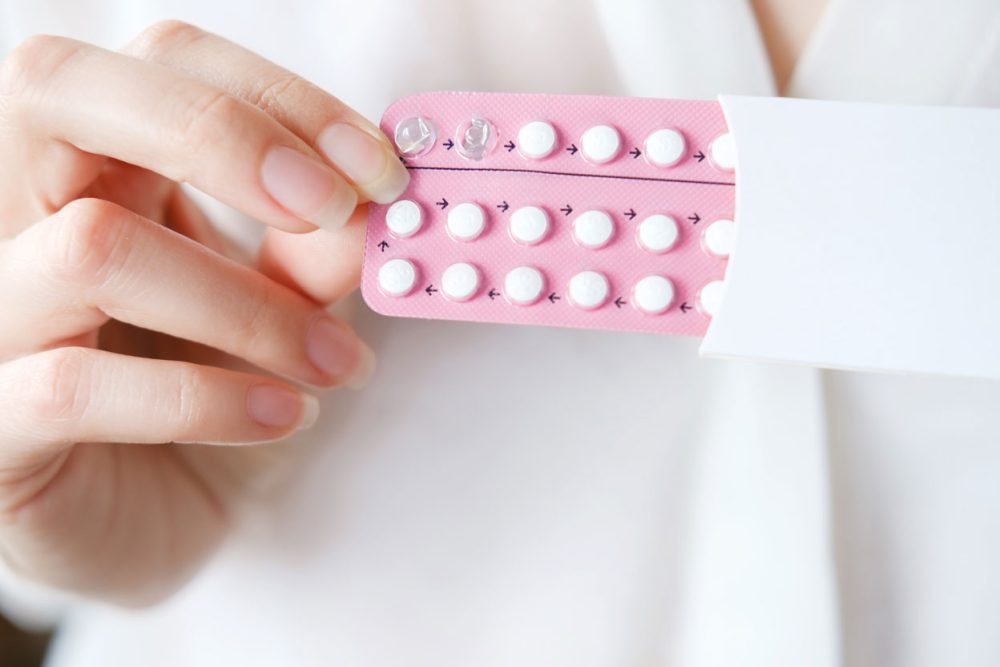Advertisment
Hormonal contraceptives in teens may alter risk assessment

Hormonal contraceptives taken by adolescents may influence development of the brain in a way that alters the recognition of risks, a new study in rats suggests.
Scientists at The Ohio State University are exploring how common synthetic hormones used for birth control affect the prefrontal cortex, an area of the brain that continues to develop throughout adolescence.
The researchers found that myelination, the formation of protective coating on axons projecting from the main body of brain cells, increased in rats given hormonal birth control compared to untreated rats, while the number of immune cells of the brain decreased. In behavior tests, the treated rats also showed signs of impulsivity.
“We start the rats on hormonal contraceptives as soon as they go through puberty and give them throughout adolescence, and then do behavioral tasks at the cusp of adulthood,” said Benedetta Leuner, co-senior author of the study and associate professor of psychology at Ohio State. “By the end of adolescence, impulsivity shouldn’t be as much of a thing, but that doesn’t seem to be the case – which, while highly speculative, suggests hormonal contraceptives might be stalling brain maturation.”
In addition, the study was the first to detect synthetic forms of these hormones in adolescent rats’ brain tissue.
“We now know that these synthetic hormones are actually getting to the brain, which is important. No one had ever shown that in adolescence,” Leuner said.
The study was presented in a poster session today (Nov. 12, 2023) at Neuroscience 2023, the annual meeting of the Society for Neuroscience.
An estimated 2 in 5 teenage girls in the United States have sexual intercourse between age 15 and 19. Among those using birth control, almost 5% use hormonal contraceptives – products that are also prescribed to treat acne and heavy periods.
Ohio State behavioral neuroscientists say it’s important to understand hormonal birth control’s effects on the developing brain so individuals can weigh the risks and benefits of their reproductive health choices.
The researchers gave a combination of synthetic estrogen and progesterone typically found in hormonal contraceptives to female rats from early to late adolescence and compared their behavior and brain tissue to untreated rats.
The study focused on myelination and immune cells called microglia because both have essential roles in prefrontal cortex development – and communication between cells in particular – that are controlled in part by natural hormones. Myelination facilitates signal transfer between cells, and microglia play a critical role in sculpting brain circuits.
Because synthetic hormones in contraceptives dampen ovaries’ production of natural estrogen and progesterone to prevent ovulation, the research team is looking at how those hormonal differences affect the brain while it is still developing.
“Synaptic development and myelination are occurring during this adolescent window and are sensitive to pubertal onset of hormones,” said co-senior author Kathryn Lenz, associate professor of psychology at Ohio State. “So we thought that disturbance of that normal pubertal hormonal activity could potentially shift the trajectory of some of those developmental processes.”
When it comes to nervous system communication, keeping it steady is key – too much or too little can lead to dysfunction that affects the mood and behavior. The finding that myelination increased and microglia decreased with hormonal contraception hints at disrupted communication, Lenz said – especially since other research teams have suggested that microglia regulate myelination.
“Shifts in either one or the other direction for both is really important to document and understand,” she said.
In behavior tests of threat appraisal, the rats given hormonal contraceptives were more likely than controls to remain in wide open elevated spaces and sample treats in unfamiliar settings – both considered risk-taking behavior.
A sensitive lab technique called liquid chromatography/mass spectrometry confirmed that the synthetic ethinyl estradiol and levonorgestrel given to the treated rats were present in brain tissue – a powerful piece of evidence that will guide future research.
“We don’t know if these effects are due to shutting down natural hormone production or if these synthetic hormones are acting directly in the brain,” Leuner said. “That’s a very big, open question.”
This work was supported by the Eunice Kennedy Shriver National Institute of Child Health and Human Development.
First author Rachel Gilfarb, a graduate student in Leuner’s lab, presented the poster. Additional co-authors include Sanjana Ranade, Meredith Stewart, Abhishek Rajesh and Courtney Dye.





